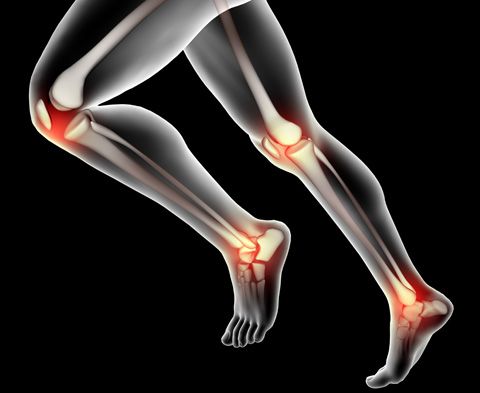Lean Body mass: Body composition parameters without fat
A toned body not only demands practicing a fitness regimen but also demands a hypocaloric and protein-rich diet followed by a regular assessment of lean muscles

If you are weight conscious and want to upgrade your physical regimen to achieve a toned musculature, then assessment of body composition parameters other than fat becomes even more convincing.
A toned body not only demands practicing an appropriate set of exercises, but it also demands a hypocaloric and protein-rich diet followed by a regular assessment of your lean muscles. This article aims to help you assess parameters for a lean musculature.
Lean body mass
This is what your body would weigh excluding body fat. It takes into account the bone mass, muscle mass, and skeletal muscle mass of your body.
Two additional parameters, protein mass and water percentage of the body contribute correspondingly to a toned musculature.
Since there is some essential fat in your bones and internal organs, the lean body mass includes a small percentage of essential fat as well.
The overall body fat is deducted from total body weight to get a Lean body mass. 1
The optimum figures of these parameters determine the perfect lean and muscular body that we chase for.
Assessment of Lean Body Mass
The Assessment of Lean body mass determines the nutritional status, and health status and predicts the forthcoming health risks. This assessment is even more recommended for upper age groups because aging is followed by a substantial decrease in Lean body mass.
MRI and DXA are the two clinical approaches to estimating Lean body mass.
Whereas, BIA stands as a quick and easily accessible technique to determine Lean body mass than the other two. BIA-based Smart body composition scales are all in one weighing scales increasingly used for lean body mass follow-ups at home.
1. Bone Mass Assessment

Bone mass or Bone Density is the estimated weight of calcium and phosphorous content in bone. The bone mass reports can help you know how you can prevent bone loss and fractures. A low bone mass is a risk factor for osteoporosis, bone fractures, and certain cancers.10
Calculate your Bone Fracture Risk
Low bone mass is also a risk factor due to both type 1 and type 2 Diabetes. Low insulin levels at an early age may lead to weaker bones and an increased risk of fractures in adulthood.
Whereas high levels of blood sugar erode collagen in the bones, making them brittle and vulnerable to fracture.3
The optimum levels for bone mass can be achieved and maintained with adequate intake of Calcium and Vitamin D from dietary sources or supplements. Resistance training including weight lifting is also a promising strategy to strengthen your bone mass and muscle mass.
For stronger bones, start supplementing Dr Trust Calcium tablets for men and women.
2. Muscle Mass Assessment

Muscle mass is the most valuable parameter that determines toned musculature. It is the fat-free mass of the body and varies with the height and fitness level of the individual.
Genetics plays a significant role in determining your body’s muscle mass.5 Increased muscle mass redefines your muscles, improves lean body mass, and corrects your body frame at required segments.
Skeletal muscles comprise the majority of muscles in the body. These are responsible for maintaining mobility, strength, and balance to perform all voluntary actions including standing from a seated position, walking, or a basic meal preparation activity.
Aging leads 30% reduction in skeletal muscle, which in turn leads to reductions in muscle mass and strength. It also possibly reduces metabolic rate leading to overweight or sarcopenic obesity.2,4,11
Besides, retaining optimum skeletal muscle mass is important for patients with type 2 diabetes, and liver fibrosis to protect them from increased risk of mortality.12,13
Increasing muscle protein synthesis with strength exercise in combination with dietary protein intake retains muscle strength and healthy muscle mass, and in a way promotes overall stamina.
3. Protein Mass Assessment

Proteins, just like carbohydrates and fats, are macronutrients that produce energy to regulate the body’s hormonal balance, immune system, and metabolism.
If you're chasing a lean body, it is essential to monitor your protein levels. Low protein levels are the indicator of accumulated body fat and can have the following detrimental effects on your health:
- Increased risk of infections
- Decreased muscle mass
- Swelling in the legs, feet, and hands
- Poor wound healing
Besides, Protein intake exceeding the recommended dietary allowance does not increase Lean body mass.
Know Your Recommended Daily Protein Intake
Complete your recommended daily protein intake with Dr Trust Rewind Multivitamins, enriched with essential minerals and Amino Acids.
4. Body water % Assessment

Water is the most essential element for survival. It makes up to 60% of body weight in an average adult, 55% in elders, and 75% in infants. 7, 8
There is currently great interest in maintaining optimal levels of hydration for active body metabolism, to look and feel good.
The water requirement of the body varies with gender, age, lifestyle, body size, ambient temperature, weather, physical activity, metabolic rate, and general health condition.
Check Your Daily Water Requirement
Even low levels of dehydration (loss of about 2% body weight) can result in headaches, fatigue, and poor physical and mental performance.
On average, an adult with a sedentary lifestyle should drink up to 1.5 lt of water per day to maintain hydration levels. 6
The recommended water intake of 3 lt for men and 2.2 lt for women is more than adequate. Water intake higher than this does not display convincing health benefits, except for removing kidney stones in some cases. 9
Besides, too much water and in rare cases can result in Hyponatremia (low levels of sodium in the blood due to excess water).7
